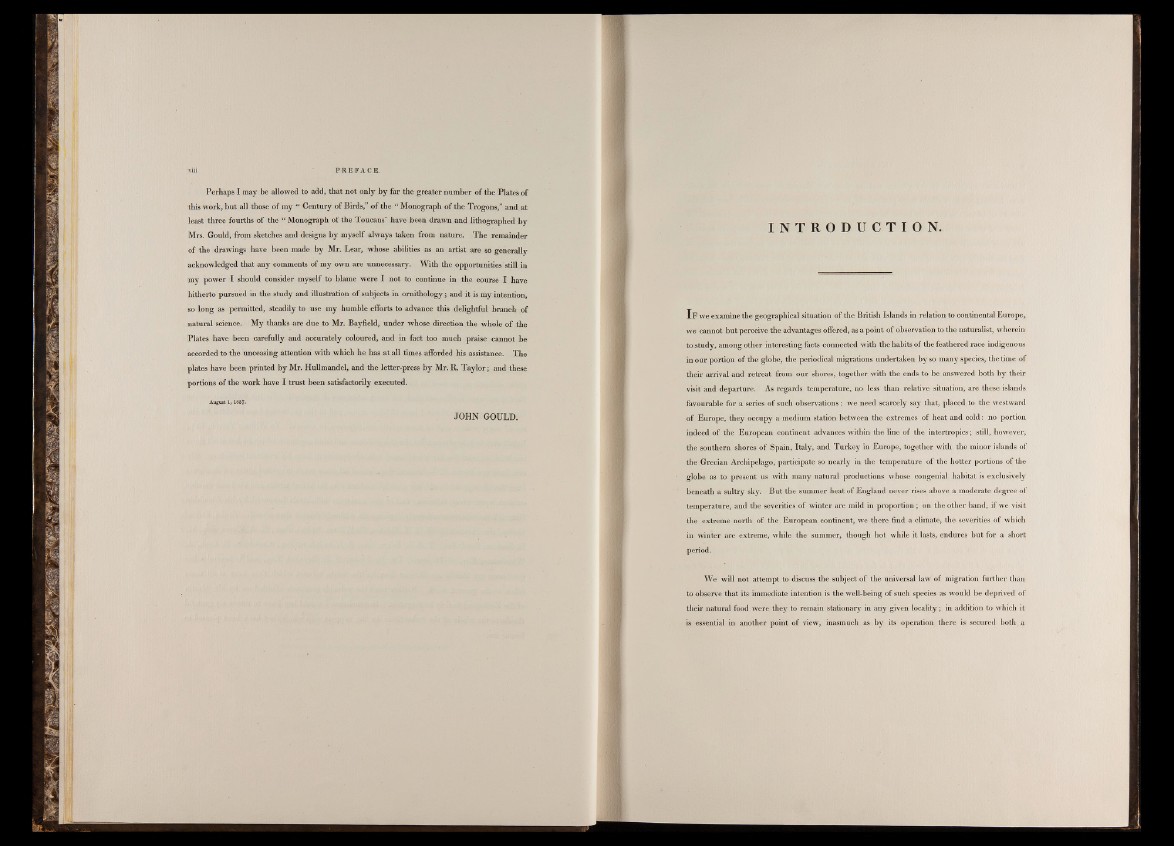
Perhaps I may be allowed to add, that not only by far the greater number of the Plates of
this work, but all those of my te Century of Birds,” of the “ Monograph of the Trogons,” and at
least three fourths of the “ Monograph of the Toucans” have been drawn and lithographed by
Mrs. Gould, from sketches and designs by myself always taken from nature. The remainder
of the drawings have been made by Mr. Lear, whose abilities as an artist are so generally
acknowledged that any comments of my own are unnecessary. With the opportunities still in
my power I should consider myself to blame were I not to continue in the course I have
hitherto pursued in the study and illustration of subjects in ornithology; and it is my intention,
so long as permitted, steadily to use my humble efforts to advance this delightful branch of
natural science. My thanks are due to Mr. Bayfield, under whose direction the whole of the
Plates have been carefully and accurately coloured, and in fact too much praise cannot be
accorded to the unceasing attention with which he has at all times afforded his assistance. The
plates have been printed by Mr. Hullmandel, and the letter-press by Mr. R. Taylor; and these
portions of the work have I trust been satisfactorily executed.
August 1, 1837-
JOHN GOULD.
I N T R O D U C T I O N .
I F we examine the geographical situation of the British Islands in relation to continental Europe,
we cannot but perceive the advantages offered, as a point of observation to the naturalist, wherein
to study, among other interesting facts connected with the habits of the feathered race indigenous
in our portion of the globe, the periodical migrations undertaken by so many species, the time of
their arrival and retreat from our shores, together with the ends to be answered both by their
visit and departure. As regards temperature, no less than relative situation, are these islands
favourable for a series of such observations: we need scarcely say that, placed to the westward
of Europe, they occupy a medium station between the extremes of heat and cold: no portion
indeed of the European continent advances within the line of the intertropics; still, however,
the southern shores of Spain, Italy, and Turkey in Europe, together with the minor islands of
the Grecian Archipelago, participate so nearly in the temperature of the hotter portions of the
globe as to present us with many natural productions whose congenial habitat is exclusively
beneath a sultry sky. But the summer heat of England never rises above a moderate degree of
temperature, and the severities of winter are mild in proportion; on the other hand, if we visit
the extreme north of the European continent, we there find a clirfiate, the severities of which
in winter are extreme, while the summer, though hot while it lasts, endures but for a short
period.
We will not attempt to discuss the subject of the universal law of migration further than
to observe that its immediate intention is the well-being of such species as would be deprived of
their natural food were they to remain stationary in any given locality; in addition to which it
is essential in another point of view, inasmuch as by its operation there is secured both a